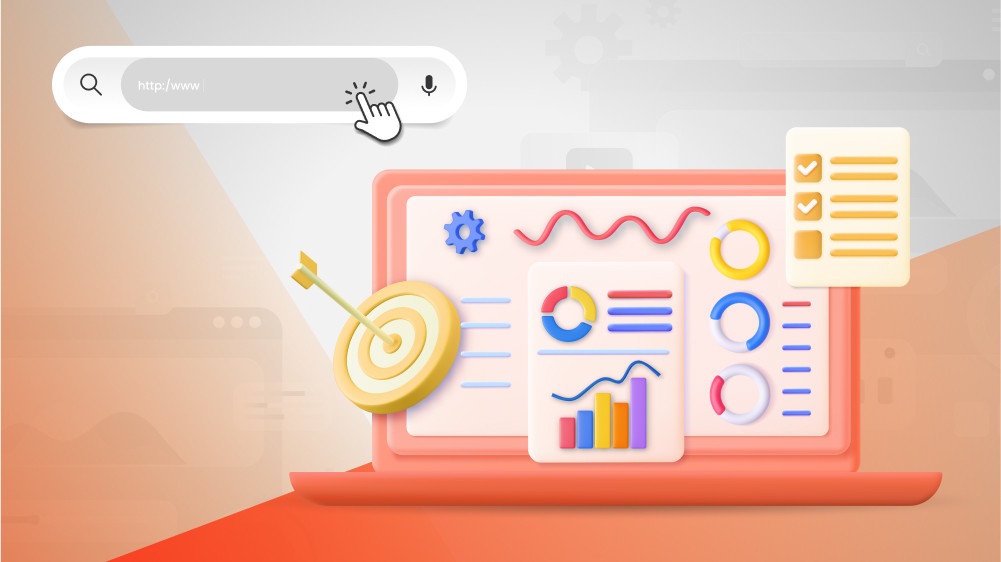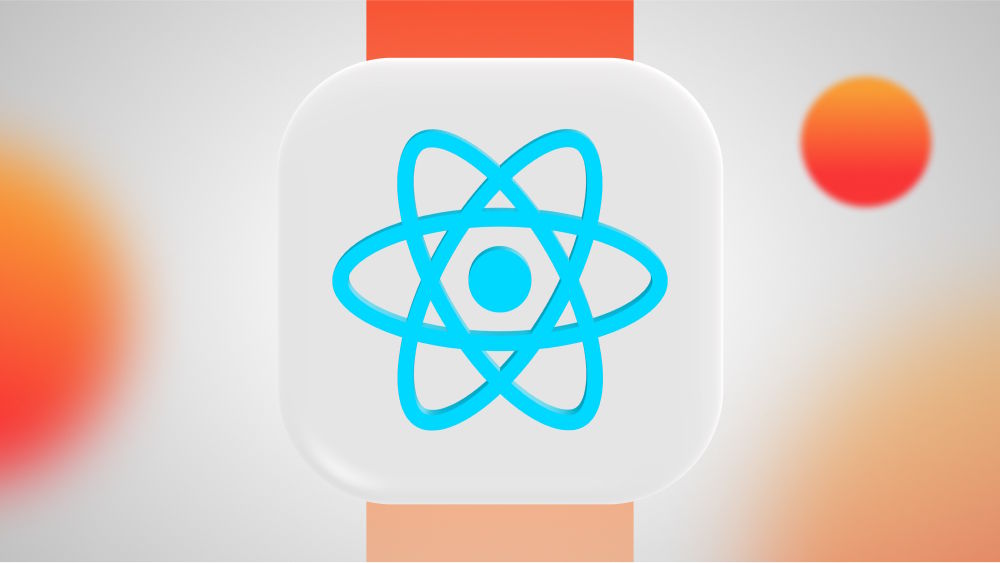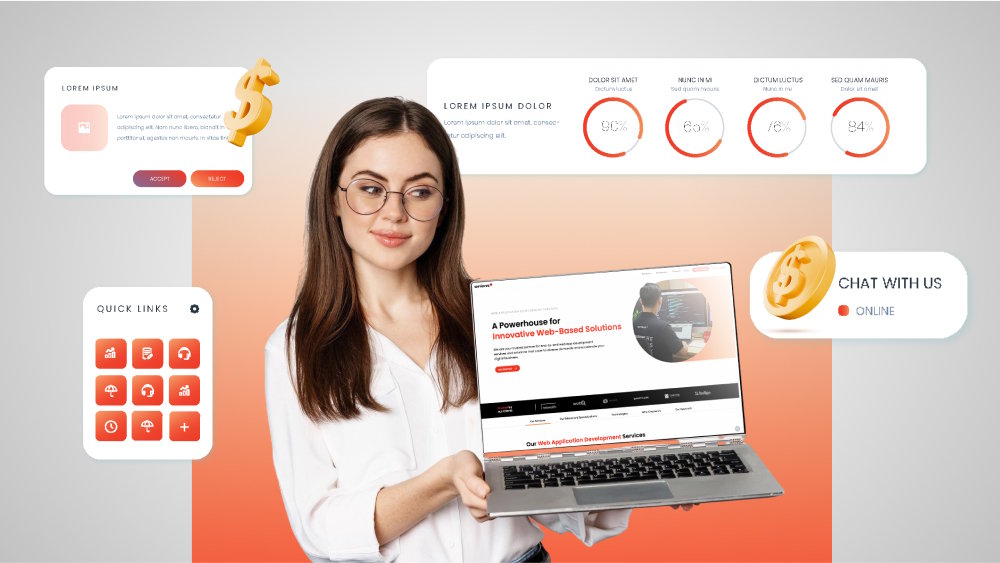
MVP Web Development: Process, Costs, Timelines & Best Practices
MVP is now not just for scrappy founders anymore, but it’s a standard practice for anyone bringing new digital products to life. If you are still new to such a journey, let's find everything you need to know in the article below.
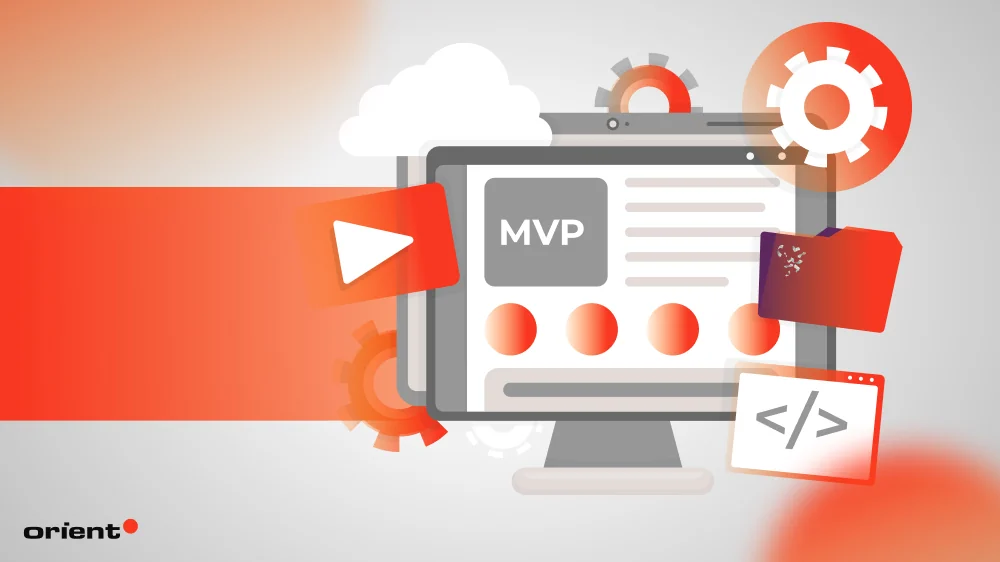
Content Map
More chaptersImagine you have successfully developed a web product you are passionate about and quickly launched it to the market. However, contrary to what you might think, users don’t seem to be very keen on adopting and using it. Your product fails as a result, and you are forced to rebuild the entire thing to reach the market again. This example emphasizes the importance of validating a business idea before actually kicking off a project, instead of simply relying on assumptions.
The Minimum Viable Product (MVP) was formed and gradually became the “standard” for every software development process with the same ideal. Today, successful teams no longer ask, “Can we build this?”. Rather, they concern themselves with “Should we build this?” And MVP development is one of the fastest and smartest ways to evaluate product-market fit.
This lean approach can be applied to every type of software development, even your web app. If you are still new to such a journey, let’s find everything you need to know in the article below, and then start your MVP web development with confidence.
What Is MVP Web Development, Exactly?

MVP, which stands for Minimum Viable Product, is the simplest version of a product designed to validate the product idea and test the market. This concept was first introduced by Eric Ries as part of his Lean Startup methodology. MVP doesn’t have all the bells and whistles of the final version, but includes just the essential features needed to be usable by early adopters. This approach allows for collecting user feedback to guide the future software development process.
So, MVP web development is the process of developing the most basic version of a web app or website with the same goal: launching quickly and collecting feedback from early customers before investing heavily in full-scale development. Because this process only requires creating the most minimal web application possible, but enough to solve the core pain point of users, it does not include the development of all the features, and typically takes place quickly in no more than 6 months. If the development timeline is extended beyond expectations, the first draft of the web app may encounter mistakes regarding technical debt, unclear requirements, or scope creep.
Which Customer Signals You Can Trust in MVP
Yes, you are not reading it wrong. While it is true that the ultimate goal of building an MVP for your future web app is to collect feedback from users and gauge their reactions to your product concept, not all reactions matter equally. Some signals that are considered weak indicators when they do not prove real demand include:
- Likes, shares, or comments on social media.
- Download numbers without active use.
- People saying “That’s a cool idea” but never signing up or paying.
These are interesting and encouraging at first glance, but in reality, they don’t provide much meaningful insight that can help you improve your product.
Instead, the real validations that clearly demonstrate whether your product solves a certain user problem are:
- Sign-ups/Registrations: Users are willing to provide you with their contact information.
- Active Usage: Customers return and engage repeatedly, not just once.
- Retention/Stickiness: Users keep using your product week after week.
- Referrals & Word of Mouth: Customers invite others to use your product without being asked.
- Willingness to Pay: Customers buy, subscribe, or pre-order.
- Feedback & Feature Requests: They care enough to tell you what to improve.
No user would invest time, effort, and money in a product that doesn’t bring real value. That’s why only when your MVP achieves these strong indicators can you somewhat positively affirm that the target audience likes your early-stage software, not just in theory but in practice, creating a solid foundation for the next stages of development of the project.
The Typical MVP Web Development Process
You can find guidance on how to develop an MVP on any website from a Google search. So, we won’t go too deep into this topic. However, let’s quickly examine the general MVP development process for any product type as follows:
- Identify the problem and assumptions.
- Define the key features that solve the core problem.
- Build the leanest possible version.
- Launch to early real users.
- Collect data and gather user feedback.
- Iterate or pivot based on learnings.
While the core principles of a general MVP development are consistent, which are building, testing, learning, and then iterating, the execution differs from product type to product type. MVP web development is much different and simpler in execution compared to other types of MVPs (like mobile apps or hardware). How can MVPs for web apps be made easier and cheaper? The table below will help you visualize what we are trying to convey here:
| Aspect | MVP Web Development | MVP Mobile Development |
|---|---|---|
| Accessibility | Instant via browser, no app store approval required | Requires app store download & approval |
| Iteration Speed | Updates go live instantly | Updates slowed by store reviews & user updates |
| Cost | Cheaper, can use no-code/lean frameworks | Higher, esp. native iOS + Android builds |
| User Experience | Works across devices, universal access | Rich mobile features (camera, GPS, push) |
| Scalability | Focus on servers, hosting, browser support | Must scale across devices & OS versions |
| Best for | Fast, low-cost validation | Products relying on mobile-first features |
That is why in this section, we will not mention MVP software development in general, but go deeper into the required steps to build a successful MVP, beginning with your initial web app idea.
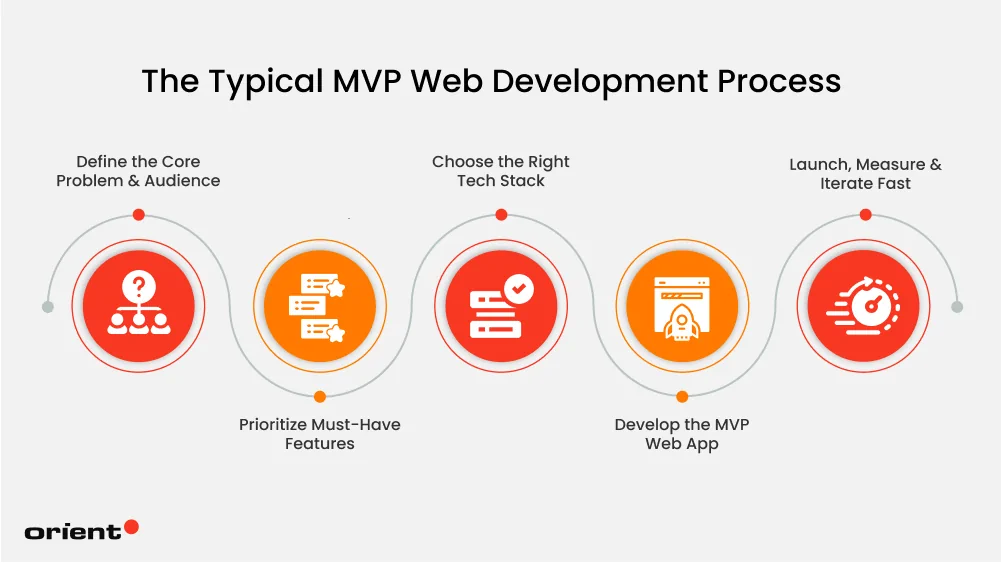
1. Define the Core Problem & Audience
Products are born to serve people. That is why market research or market testing is always placed at the beginning of every process. To avoid creating a web app that no one needs to use, you must first have a clear answer to two questions: one is who your target audience is, and the second is what their pain points are. A well-defined problem and audience keep your MVP web development laser-focused, reducing wasted time and wasted features. Here are the actions you need to take:
- Write 3-5 problem statements (“[Persona] struggles to [task] because [reason]”).
- Draft 1-2 lightweight personas (job, context, pains, success criteria).
- Rank problems by urgency, frequency, and willingness to pay.
For example, after market research, you gain insights that busy employees struggle to eat healthy lunches because they lack time to cook or leave the office. Through a survey of office workers aged 25 to 40 in major cities, you get the following results: more than 70% of respondents, although they eat fast food, wish for healthier, quicker options. The idea of an MVP for ordering healthy food can be developed further from here.
2. Prioritize Must-Have Features
Not every feature can be put into MVP. Since MVP is simply the most minimal version that only includes basic features, you need to clearly define its must-have features instead of cramming too many redundant features to make it more complicated. What should you do at this step?
- List all potential features → cut down to the minimum needed to solve the problem.
- Example: For Airbnb’s MVP web app, must-have features are listings + booking request + payments (no filters, reviews, or fancy dashboards yet).
While choosing which features are must-haves and which are not, you can keep in mind some of the following:
Must-have features should:
- Enable the core value proposition.
- Support only the primary user flow.
- Be functional, not perfect.
3. Choose the Right Tech Stack
The purpose of choosing a tech stack is not to pick “the most perfect” technology stack for the next 10 years. Rather, such a task is to pick the tools and languages that best support your development process, helping your MVP market quickly while leaving room to grow if it takes off.
Here is the suggested tech stack for your MVP web development:
| Layer/ Function | Recommended Options | Why It Works for MVP |
|---|---|---|
| Frontend (UI) | Next.js (React), Vue.js, Svelte | Fast, component-based, SEO-friendly, large communities |
| Backend (APIs) | Node.js (Express/Nest.js), Django (Python), Ruby on Rails | Rapid development, well-documented, proven for MVPs |
| Database | PostgreSQL, MySQL | Reliable, easy to scale, widely supported |
| Authentication | Auth0, Supabase, Firebase Auth | Secure login in hours instead of weeks |
| Payments | Stripe, PayPal | Prebuilt compliance, easy integration |
| Emails/Notifications | Postmark, SendGrid, AWS SES | Simple transactional emails & alerts |
| Hosting/Deployment | Vercel, Netlify, Heroku | Quick deployment, integrated CI/CD |
| CI/CD (Automation) | GitHub Actions, GitLab CI | Auto-deploys updates, reduces manual errors |
4. Develop the MVP Web App
Once you have everything in place, it’s time to start making your MVP happen. And as we started, try to keep the development process as simple as possible, as that’s all you need - getting a working version of your core value proposition into users’ hands as quickly as possible.
Some notes to keep in mind include:
- Focus on clean UX/UI that makes the core action easy.
- Keep navigation minimal.
- Build the backend only for core features.
- Integrate only essential services: authentication, payments, analytics.
- Skip advanced features like customization.
5. Launch, Measure & Iterate Fast
You can finally launch the MVP at this stage. We all know you’ll get so excited about such an event, but it’s our advice to treat this as a live experiment, not a “big bang” launch. Instead of running a massive marketing campaign for your MVP web project, you should just publish a short changelog, send simple onboarding emails, and set up clear support loops to inform and support pilot customers.
Everything that happens around the MVP needs to be closely tracked. Any user behavior can serve as valuable insights for you and your development team for future development. However, as mentioned above, not all customer feedback is valuable. By monitoring key metrics like sign-ups, active users, retention, conversions, look for strong signals: Are people returning? Referring others? Paying? to know exactly whether your MVP is a hate or a love for early adopters.
- If metrics + feedback confirm demand -> time to scale.
- If users love part of the app but ignore others -> time to pivot.
- If no traction after multiple iterations -> better to cut losses early.
How Much Does MVP Development Cost?
For most startups, MVP web development typically costs between $10,000 and $50,000. The exact figure depends on factors such as the complexity of features, design needs, team setup, technology stack, and project urgency. For example, landing pages, considered simple MVPs, will cost far less than marketplaces or SaaS platforms with payments and dashboards. So, if you’re still looking for a one-size-fits-all figure, that’s impossible. However, according to a general survey, the estimated development costs for an MVP web app are as follows:
| MVP Type | Example Features | Cost Range (USD) |
|---|---|---|
| Simple MVP | Landing page, login, 1 to 2 core features, basic dashboard | $5,000 - $15,000 |
| Moderate MVP | User accounts, CRUD features, payments, admin panel | $15,000 - $40,000 |
| Complex MVP | Marketplace, SaaS, integrations, advanced analytics | $40,000 - $100,000+ |
In addition to factors that can affect software development costs, some cost-saving approaches, such as using no-code/low-code tools (e.g., Webflow, Bubble) or outsourcing to specialized MVP agencies, can also significantly reduce a business’s final budget for developing an MVP, further minimizing development costs.
The Estimated Timelines for Your MVP
More than just a project schedule, the MVP development timeline has a significant impact and can determine the survival of the project. Especially in the fast-paced world of software, timing can mean the difference between capturing a market opportunity and missing it entirely. And only a clear timeline can help you reach the right market at the right time.
The table below gives you some insights into the MVP web development timeline:
| MVP Type | Typical Timeline | Example Use Case |
|---|---|---|
| Simple MVP | 4-8 weeks | SaaS tool with one main function |
| Moderate MVP | 2-3 months | E-commerce MVP with checkout + order management |
| Complex MVP | 3-6 months | Marketplace or SaaS with scheduling + messaging |
MVP web development shouldn’t take too long because of the simplicity-oriented nature of such an approach. If your MVP timeline stretches beyond 6 months, it signals some red flags. It’s no longer the fastest, leanest version of your product with only core functionality; it may have morphed into a full product without you even noticing. The consequences? The longer you take to release an MVP website, the longer it takes to validate assumptions and learn from customers for the final product.
While most MVPs should take 4-12 weeks (sometimes up to 3-4 months), there are cases where an MVP timeline can extend beyond 6 months. However, these are exceptional cases and usually only appear in highly complex products or products in regulated industries.
Final Thoughts

MVP web development has shifted from being a “lean startup” tactic to an industry-wide norm. MVP is now not just for scrappy founders anymore, but it’s a standard practice for anyone bringing new digital products to life. However, there are also fixed standards that help your beta product become a successful MVP website: start small, validate early, and scale only after proving traction. By doing this, every dollar spent moves you closer to product-market fit.
If you are still new to such a journey, maybe these practical tips can help:
- Focus on core features only - avoid feature bloat.
- Validate with users early - gather real feedback before scaling.
- Choose the right tech stack - balance speed vs. scalability.
- Build for learning, not perfection - MVP is about discovery.
- Partner with experts - how software development services like Orient Software accelerate delivery.
- Track key performance indicators - engagement, retention, churn, CAC, LTV.


